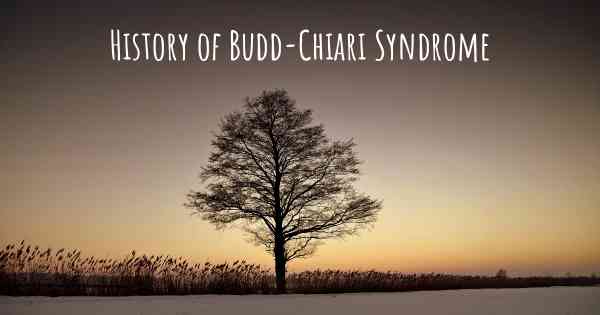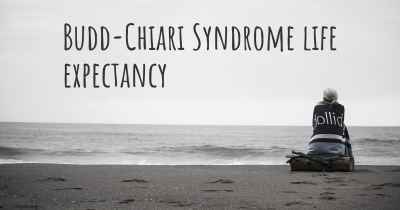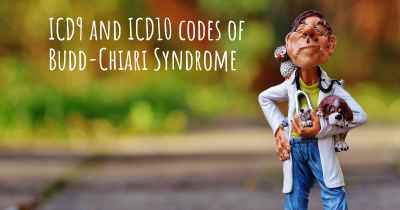What is the history of Budd-Chiari Syndrome?
When was Budd-Chiari Syndrome discovered? What is the story of this discovery? Was it coincidence or not?

Budd-Chiari Syndrome (BCS) is a rare and potentially life-threatening condition that affects the liver. It is characterized by the obstruction or narrowing of the hepatic veins, which are responsible for draining blood from the liver. This blockage leads to impaired blood flow and can result in liver damage or failure.
The history of Budd-Chiari Syndrome dates back to the 19th century when it was first described by two physicians, George Budd and Hans Chiari, who independently reported cases of liver enlargement and ascites (abnormal accumulation of fluid in the abdomen) associated with hepatic vein obstruction.
George Budd, an English physician, published his observations in 1845 after studying several patients with liver enlargement and ascites. He noted that the condition was more common in women and often associated with thrombosis (blood clot formation) in the hepatic veins. Budd's work laid the foundation for understanding the clinical features and potential causes of the syndrome.
Hans Chiari, an Austrian pathologist, also made significant contributions to the understanding of BCS. In 1899, he published a comprehensive study on hepatic vein thrombosis, describing the anatomical changes and histopathological findings associated with the condition. Chiari's work helped establish the pathological basis of the syndrome.
Over the years, further research and advancements in medical imaging techniques have improved our understanding of Budd-Chiari Syndrome. It has been found that the condition can be caused by various factors, including blood clotting disorders, liver diseases, tumors, infections, and certain medications. In some cases, the cause remains unknown.
Diagnosing Budd-Chiari Syndrome can be challenging due to its rarity and diverse clinical presentation. Physicians rely on a combination of medical history, physical examination, laboratory tests, and imaging studies to make an accurate diagnosis. Imaging techniques such as ultrasound, computed tomography (CT), magnetic resonance imaging (MRI), and angiography are commonly used to visualize the hepatic veins and identify any obstructions.
Treatment of Budd-Chiari Syndrome depends on the underlying cause, severity of symptoms, and extent of liver damage. The primary goal is to restore blood flow to the liver and prevent further complications. Treatment options include medication to dissolve blood clots, anticoagulants to prevent clot formation, angioplasty to widen narrowed veins, stent placement to keep the veins open, and liver transplantation in severe cases.
In conclusion, Budd-Chiari Syndrome is a rare liver disorder that was first described by George Budd and Hans Chiari in the 19th century. Their pioneering work laid the foundation for understanding the clinical and pathological aspects of the syndrome. With advancements in medical knowledge and technology, the diagnosis and treatment of BCS have improved, offering better outcomes for affected individuals.
Budd-Chiari syndrome (BCS) is an extremely rare condition, affecting just one in every million people. Named after 19th-century British physician, George Budd, and his contemporary, Austrian pathologist, Hans Chiari, the disorder is characterized by an obstruction in the hepatic veins that can also affect the inferior vena cava and the right atrium. This tendency towards thrombosis affects men and women between 20 and 40 years old and makes BCS a potentially life-threatening disorder that can spur cascading complications.
Posted Sep 22, 2020 by Girisam 3120








